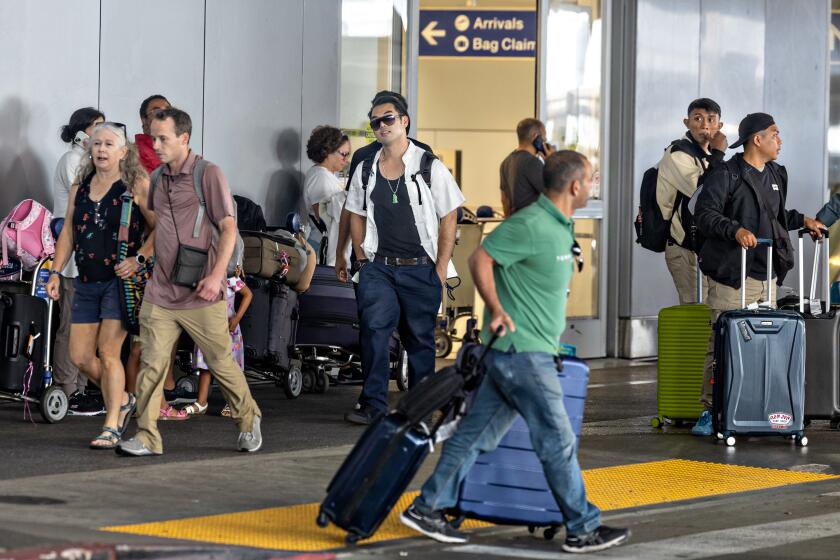Below is from: https://www.latimes.com/california/story/2024-07-15/covid-levels-jump-in-california-l-a-county-wastewater?sfmc_id=6532a30725b3640666beb4a3&utm_id=36063669&skey_id=d651881d66bebf76dfd4630bf9302c7d2dc421eade51c90238518dee1165ada8&utm_source=Sailthru&utm_medium=email&utm_campaign=ALERT-Email-List-California%20hits%20%27very%20high%27%20COVID%20levels-20240715&utm_term=Alert%20-%20News%20Alerts
California hits ‘very high’ COVID levels as virus in wastewater jumps significantly

A record number of passengers passed through LAX at the end of the July 4 holiday this month.
(Jason Armond / Los Angeles Times)
By Rong-Gong Lin IIStaff Writer
July 15, 2024 3 AM PT
Coronavirus levels have jumped significantly in wastewater across the nation, an indication that the summer bump is continuing to grow.
National virus measurements in sewage reached “high” levels for the first time this summer, according to estimates released Friday by the U.S. Centers for Disease Control and Prevention. COVID-19 is growing or probably growing in 44 states and in the nation’s capital, the agency reported.
COVID levels in California sewage hit very high level
Weekly wastewater viral activity level
Line chart shows COVID levels in wastewater. For the week ending on July 6, the California level is 9.72, considered very high. Nationwide, the level is high at 4.97.
Aug.2023Sept.Oct.Nov.Dec.Jan.2024Feb.MarchAprilMayJuneJuly02468101214
U.S.
California
Viral activity level categoriesVery high High ModerateLow MinimalLatest data is for the week ending on July 6.
U.S. Centers for Disease Control and Prevention
Sean Greene
LOS ANGELES TIMES
ADVERTISING
And for the first time since the winter, California has “very high” coronavirus levels in its wastewater, according to CDC data for the week ending July 6. California was one of seven states in this category; the others are Arkansas, Florida, Maryland, Nevada, Oregon and Texas. Nineteen other states, covering every region in the country, have high coronavirus levels in sewage.
Coronavirus levels in California’s wastewater are now estimated to be significantly higher than last summer. And in Northern California two of the largest sewersheds, covering San Jose and Palo Alto in Santa Clara County (the region’s most populous county), reported high levels of the virus in wastewater.
Also, the rate at which COVID tests are coming back with positive results in California has almost reached last summer’s peak. For the week that ended July 8, 13% of reported tests came back positive; the rate for the comparable week a month earlier was 4.8%. The latest positive test rate almost exceeds the peak from last summer, which was 13.1% in late August and early September.
Machesney Park
‘Playing COVID roulette’: Some infected by FLiRT variants report their most unpleasant symptoms yet
July 8, 2024
In Los Angeles County, the nation’s most populous, coronavirus levels in wastewater have jumped significantly.
In addition, “we are seeing an increase in the number of cases, emergency department visits and hospitalizations for COVID-19,” the L.A. County Department of Public Health said in a statement to The Times. “It is too early to tell whether or not there will be a larger wave this summer compared to last summer.”
For the 10-day period that ended June 29, the most recent information available, coronavirus levels in L.A. County sewage were at 27% of last winter’s peak, according to the health department. That’s up significantly from the prior comparable period, ending June 22, which was 17% of last winter’s peak.